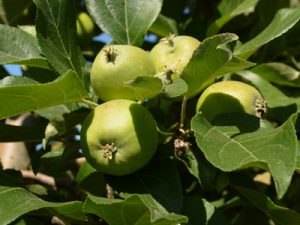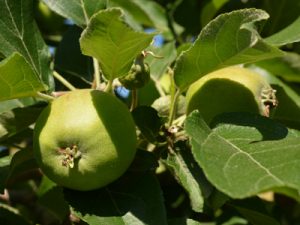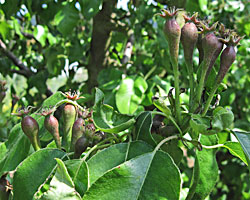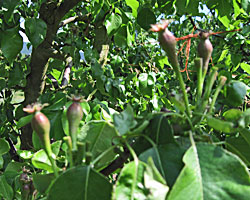We’ve posted on this topic before, but it is worth saying again how important it is to thin the fruit on your fruit trees. Typically, most trees set much more fruit each spring than they have the energy to ripen. By thinning the fruit while it is small, you direct the tree’s energy into the remaining fruit. It often comes down to quantity verses quality. By removing some of the quantity of fruit, you increase the quality.
Young trees especially should be thinned heavily. Remove all the fruit from the last 8″-12″ of branch. This will keep the fruit from pulling the branches down and causing the tree to become poorly shaped.
Another reason for thinning fruit is keeping the trees in regular annual bearing. Most fruit trees, left unthinned, will bear heavy crops one year, and light or no crops the next year. This is called biennial bearing, and is most common in apples, but also seen in pears and plums.
With some fruit trees, the fruit set can be so heavy that the ripening fruit can break branches. This is a frequent recurrence in plum trees.
- A cluster of apples set on one spur.
- Same cluster after removing most of the apples
- Unthinned Pear Cluster
- Same Pear Cluster after thinning
Plum and cherry trees can be thinned by removing fruit clusters from the undersides of the branches. This helps air circulation around the remaining fruit, and can help prevent the spread of brown rot.
Another way thinning now can help your trees? You can choose the best looking fruit on the tree to remain, and remove fruit that is misshapen or already damaged by insects and disease.





